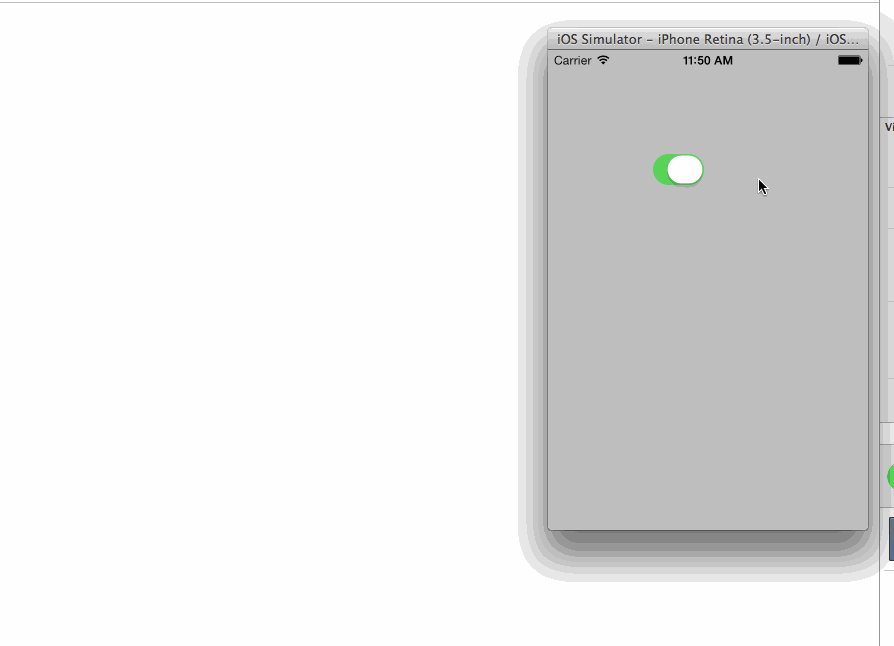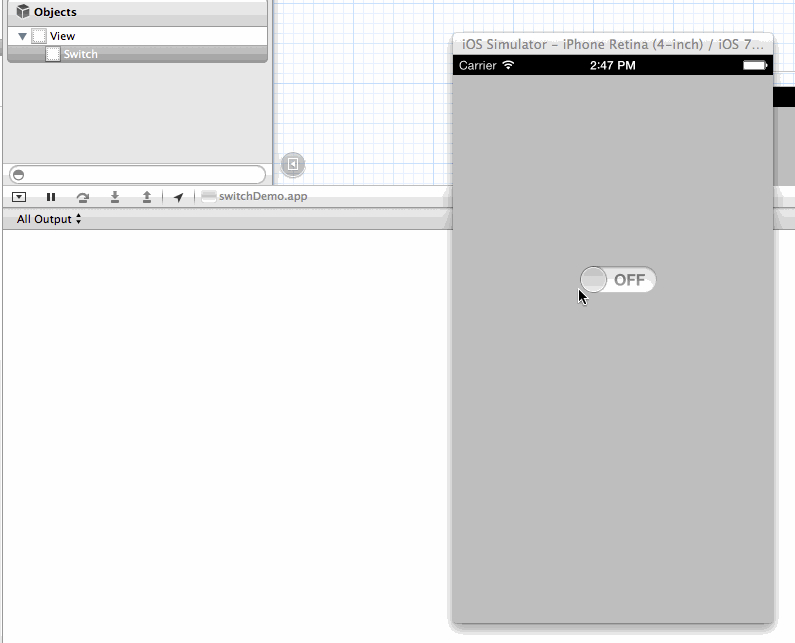编辑
现在固定在 ios7.1
不要做任何调整来修复它。
编辑2
显然,相同的问题在iOS 8.0和8.1中再次发生
编辑3
现在固定在 ios9.2
不要做任何调整来修复它。
今天,嗨,我看到在UISwitch's事件ValueChanged:中调用continuously ,而我的改变On来Off或者Off到在我的手指还在移动在右侧和左侧。我使用NSLog使GIF图像更加清晰。

我的价值更改方法是:
- (IBAction)changeSwitch:(id)sender{
if([sender isOn]){
NSLog(@"Switch is ON");
} else{
NSLog(@"Switch is OFF");
}
}iOS6与Switch相同的代码可以正常工作,正如我们期望的那样:

因此任何人都可以建议我仅将其状态打开或关闭一次。还是这是错误还是什么?
更新
这是我的演示: